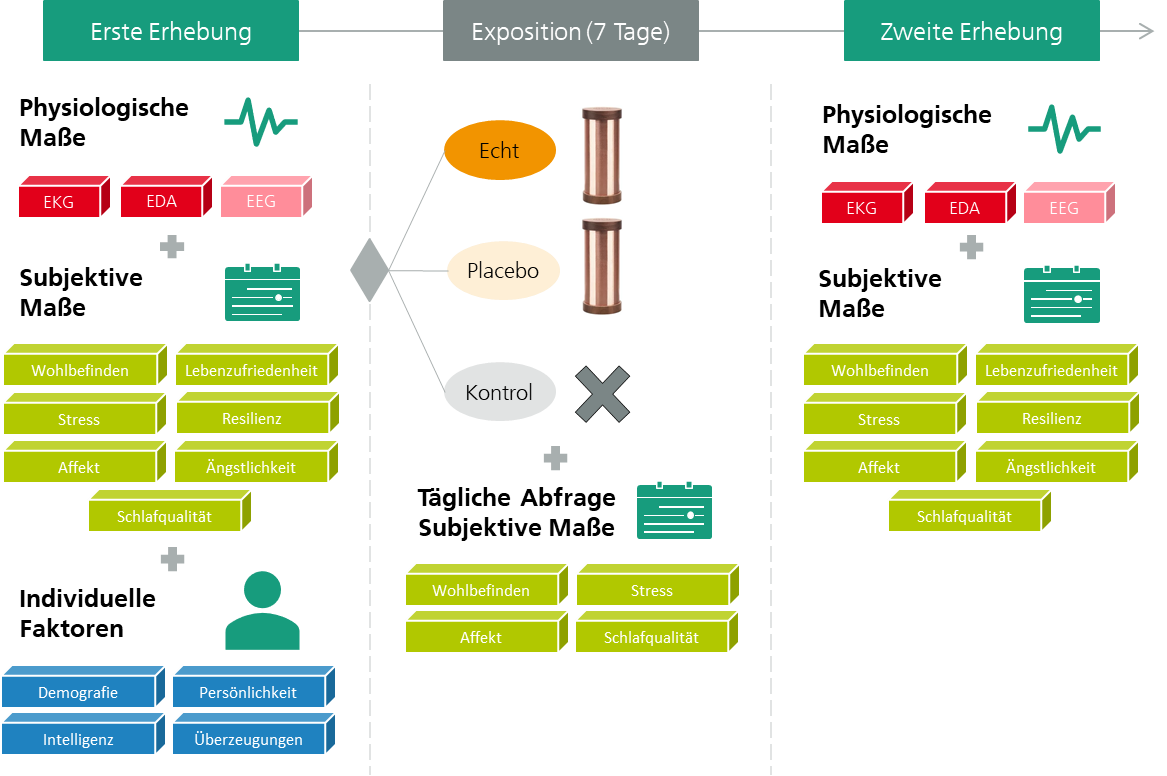Self-report results - effects of the device on subjective measures
There were no pre-existing differences between the groups regarding the dispositional variables such as intelligence and topic-related belief. The three groups showed no difference in the personality traits extraversion, openness to new experiences, conscientiousness, and neuroticism. Regarding the personality trait agreeableness, there was a significant difference between the group with the real device and control group differed with lower agreeableness values in the former. Participants who scored higher on the matrices test (intelligence test) were less likely to belief in complementary and alternative medicine, to have paranormal beliefs, and to experience paranormal events. Participants with paranormal beliefs and participants indicating higher fear of radiation were more likely to belief in an effect of the device.
After the exposure no significant differences between the groups were found regarding the reported well-being, life-satisfaction, stress, resilience, anxiety, affect, and sleep quality. There was no difference in the daily questionnaires either. Furthermore, there was no difference in sleep quality between the groups. However, participants with the real device, who placed it closer to their body and had it with them for a longer period of time (based on self-report), reported better subjectively perceived sleep quality compared to other participants in the same group who positioned the device further away from them and spent less time next to it.
Results of neurophysiological measurements - Effects of the device on objective measures
In addition, there were no group-related differences in psycho-physiological correlates of stress and well-being like the number of individual phasic responses and the change in the tonic state of the electrical dermal activity (EDA) or the heart rate (heart rate variability calculated from the ECG recordings).
On the neurophysiological level, we observed no differences between the experimental groups in most of the EEG correlates. Only a significant increase in EEG frontal theta-band power was found in the resting state measurement with eyes open and eyes closed after the exposure with the real device. Frontal theta-band power is associated with a deactivation of the so-called default mode network (Scheeringa et al., 2008). There seems to be a relationship between the default mode network activity and subjective well-being and resilience (Brunetti et al., 2017, Shi et al., 2018). However, no significant effects of the usage of the device on other frequency bands or the functional connectivity were found.
Conclusion and discussion
In sum, the study showed no clear effects of a one-week exposure with the Qi-Shield on subjective well-being, stress, and sleep quality examined on a psychological, psycho-physiological, and neurophysiological level. Nonetheless, the results of frontal theta power increase should be subject of further studies. Since we did not investigate possible physical and chemical effects of the product Qi-Shield, we cannot explain the observed effects, nor can we guarantee the absence of possible confounding effects in the experiment. Therefore, we emphasize the need to replicate the results within a new study and sample.
 Fraunhofer IAO
Fraunhofer IAO